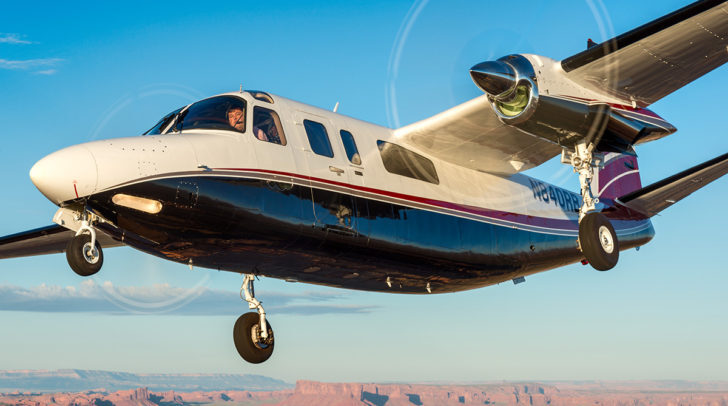
The Honeywell engines that power all turboprop Twin Commanders are noted for their excellent performance and fuel efficiency. One other advantageous consequence of the direct-drive engine design compared to free turbines is the rapid response of engine and propeller rpm to changes in power lever position. If you’re descending a bit too rapidly on a non-precision approach, skootch the levers ahead slightly to increase power and slow the descent rate. (Condition levers have already been set to HI RPM, as called for in the Before Landing checklist.) You’ll see the results almost immediately. Same for increasing descent rate—retard the levers a tad to wipe off a bit of power, and the IVSI tells the tale right away. No final-approach, pucker-inducing delay in power and descent-rate response from Honeywell engines.
The key to using small power adjustments to achieve the desired descent rate on approach is making sure the engines are tuned properly. A too-low flight idle setting can result in undesirably high sink rates, as Hooper Harris explains.
“Instant power response made recovering from bad landings safe and easy, but emphasizing monitoring power and vertical speed on approach was important,” says Harris, who flew a corporate 680T Twin Commander converted to a V with the Century Conversion (-1-151K engines) in the 1980s, then joined FlightSafety in Bethany, Oklahoma, as a pilot instructor. “You might miss the subtle propeller noise change as you near flight idle and could set up a fairly sporty sink rate by under-powering just slightly.
“Instructing in the AiResearch/Garrett/Honeywell TPE-331-engined Commanders was interesting,” Harris said. “Given the variance in TQ or HP sensing systems in different-aged airplanes (especially at low power), I found that small changes in power were best managed by making small changes in fuel flow. The FF indication was usually much more stable.”
Harris said he was fortunate to fly each Twin Commander model from the 680T through the 695B. “The 690C/840 was a sweet spot in the series, to my reckoning,” he noted. “Any airplane that can climb in excess of 1000 fpm on one engine (SL, MGTOW) is a keeper. I remember the best rate of climb (Vy) speed was 113 kts. On one engine it outperformed a lot of high-performance singles flown at the same speed (like the Cessna 210) and was in the ballpark of many cabin-class piston twins (like the Piper Navajo) on two engines. Fantastic airplanes!
